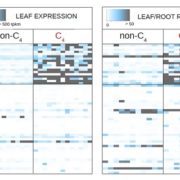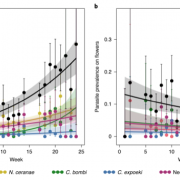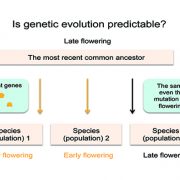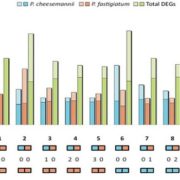Review. Grasses: The original Vikings ($)
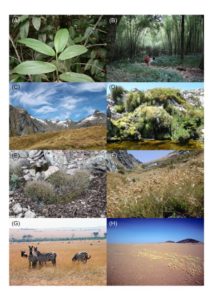 The Vikings were notorious raiders for centuries, pillaging and looting the shores throughout the northern hemisphere. Through their successful raids, the Vikings established colonies that grew into states and countries, among these Normandy, England, Sicily, and Russia. The success of the Vikings is due to several factors, including effective dispersal, rapid population growth, resilience, plasticity, and transforming their environments to fit their needs. A recent review by Linder et al. discusses how “Viking Syndrome” (invasive ability) is responsible for the success of the grasses (Poaceae), allowing the most successful angiosperm family to establish and thrive around the globe. The grasses developed key attributes at the right times in their evolutionary history. The dispersal ability of the grasses allowed them to reach nearly all four corners of the Earth, and is largely made possible by the spikelet, an inflorescence structure unique to them. Grasses are also highly successful at establishing in new environments due to their short generation times, and capable of surviving genetic bottlenecks by wind pollination, occurrence of polyploidy, and self-incompatibility. C3 and C4 photosynthesis, frost tolerance, and flexible growth forms allow grasses to dominate a range of environmental extremes, and a high tolerance of environmental disturbance, such as fire and herbivores, allow grasses to not only persist, but thrive in environments that limit the growth of most other plants. Grasses, having become incredibly successful over the last 100 million years, did not truly attain their success through the Viking Syndrome, rather, the Vikings triumphed because of the Grass Syndrome. (Summary by Danielle Roodt Prinsloo) Biol. Rev. 10.1111/brv.12388
The Vikings were notorious raiders for centuries, pillaging and looting the shores throughout the northern hemisphere. Through their successful raids, the Vikings established colonies that grew into states and countries, among these Normandy, England, Sicily, and Russia. The success of the Vikings is due to several factors, including effective dispersal, rapid population growth, resilience, plasticity, and transforming their environments to fit their needs. A recent review by Linder et al. discusses how “Viking Syndrome” (invasive ability) is responsible for the success of the grasses (Poaceae), allowing the most successful angiosperm family to establish and thrive around the globe. The grasses developed key attributes at the right times in their evolutionary history. The dispersal ability of the grasses allowed them to reach nearly all four corners of the Earth, and is largely made possible by the spikelet, an inflorescence structure unique to them. Grasses are also highly successful at establishing in new environments due to their short generation times, and capable of surviving genetic bottlenecks by wind pollination, occurrence of polyploidy, and self-incompatibility. C3 and C4 photosynthesis, frost tolerance, and flexible growth forms allow grasses to dominate a range of environmental extremes, and a high tolerance of environmental disturbance, such as fire and herbivores, allow grasses to not only persist, but thrive in environments that limit the growth of most other plants. Grasses, having become incredibly successful over the last 100 million years, did not truly attain their success through the Viking Syndrome, rather, the Vikings triumphed because of the Grass Syndrome. (Summary by Danielle Roodt Prinsloo) Biol. Rev. 10.1111/brv.12388



